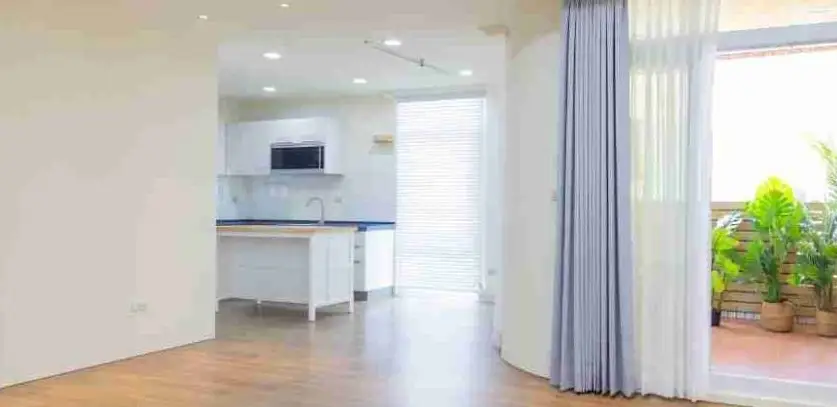
The Importance of Air Quality in Southern Ontario Homes
Air quality is a crucial yet often overlooked aspect of home comfort, especially in Southern Ontario, where seasonal changes, urban pollution, and high humidity levels can significantly impact indoor environments. Poor indoor air quality can lead to health issues, reduced energy efficiency, and an overall decline in home comfort. In this blog, we’ll explore why air quality matters, the potential health risks of poor air conditions, and how homeowners in Southern Ontario can improve their indoor air quality for a healthier and more comfortable living space.
The Health Risks of Poor Indoor Air Quality
According to studies, the air inside our homes can be 2 to 5 times more polluted than outdoor air, even in suburban areas of Southern Ontario. Poor ventilation, allergens, moisture buildup, and pollutants from household products can all contribute to unhealthy indoor air. Here are some of the most common health risks associated with poor air quality:
3. Fatigue & Headaches
High levels of carbon dioxide (CO₂), volatile organic compounds (VOCs) from household products, and poor ventilation can lead to fatigue, headaches, dizziness, and difficulty concentrating. Many people don’t realize that indoor air quality could be the reason for their frequent discomfort.
4. Carbon Monoxide Poisoning
With Ontario’s cold winters, many homeowners rely on furnaces, fireplaces, and gas appliances. Without proper ventilation and carbon monoxide (CO) detectors, there is a risk of carbon monoxide poisoning, which can be life-threatening.
5. Long-Term Health Effects
Prolonged exposure to pollutants like radon, smoke, and VOCs can increase the risk of lung disease, heart conditions, and even cancer. Ensuring clean indoor air is a vital part of long-term health and wellness.
How to Improve Indoor Air Quality in Southern Ontario Homes
The good news is that there are effective solutions to combat poor indoor air quality. Here’s how homeowners in Southern Ontario can take action:
1. Improve Home Ventilation
Proper ventilation helps reduce stale indoor air and prevents the buildup of moisture, pollutants, and odors.
- • Open windows whenever possible to bring in fresh outdoor air, especially in the spring and fall when pollen levels are lower.
- • Use exhaust fans in kitchens and bathrooms to remove excess humidity and contaminants.
- • Consider installing a Heat Recovery Ventilator (HRV) or Energy Recovery Ventilator (ERV) to maintain fresh airflow while retaining heat in winter and cool air in summer.
2. Use High-Quality Air Filters
Your HVAC system plays a key role in filtering indoor air. Installing high-quality air filters can significantly improve air quality.
- • Use MERV 11 or higher-rated filters to trap dust, pollen, and airborne allergens.
- • Change HVAC filters every 1-3 months to maintain efficiency.
- • Consider a HEPA filter for maximum air purification, especially if you have allergies or pets.
3. Control Humidity Levels
Southern Ontario’s humid summers and dry winters can create air quality challenges. Maintaining balanced humidity levels is essential.
- • Keep indoor humidity between 30-50% for optimal comfort.
- • Use a dehumidifier during humid summer months to prevent mold growth.
- • Install a steam humidifier in winter to prevent dry air from irritating your skin and sinuses.
4. Install an Air Purifier
A whole-home air purifier or UV light air sanitization system can remove bacteria, viruses, and allergens, keeping your home’s air healthier. These systems work alongside your HVAC system to continuously purify the air.
5. Reduce Indoor Pollutants
Many household products release chemicals that contribute to poor indoor air quality.
- • Use natural, fragrance-free cleaning products to reduce VOC exposure.
- • Avoid aerosols and synthetic air fresheners, which can introduce harmful particles into the air.
- • Choose low-VOC paints, furniture, and flooring to minimize chemical pollutants in your home.
6. Schedule Regular HVAC Maintenance
Routine HVAC maintenance ensures that your heating and cooling systems are running efficiently and not circulating dust, mold, or other pollutants.
- • Schedule a professional HVAC inspection at least once a year.
- • Clean air ducts to prevent dust and debris buildup.
- • Ensure gas appliances are properly vented to prevent carbon monoxide buildup.
Why Southern Ontario Homeowners Should Prioritize Air Quality
Ontario’s climate presents unique air quality challenges. The combination of high humidity, seasonal allergies, urban pollution, and long winters means homeowners need to be proactive about their indoor air. Investing in better ventilation, filtration, and humidity control not only improves health but also boosts home comfort and energy efficiency.
By taking simple steps like using air purifiers, maintaining HVAC systems, and reducing indoor pollutants, homeowners can breathe easier and create a healthier, more comfortable home environment year-round.
Need Help Improving Your Home’s Air Quality?
At Real Deal HVAC, we specialize in air quality solutions, HVAC maintenance, and whole-home ventilation systems to ensure your home stays comfortable and safe. Whether you need an HRV installation, air purifier, humidifier, or furnace tune-up, we’re here to help.
Contact us today to schedule an indoor air quality assessment and take the first step toward cleaner, healthier air in your home!


